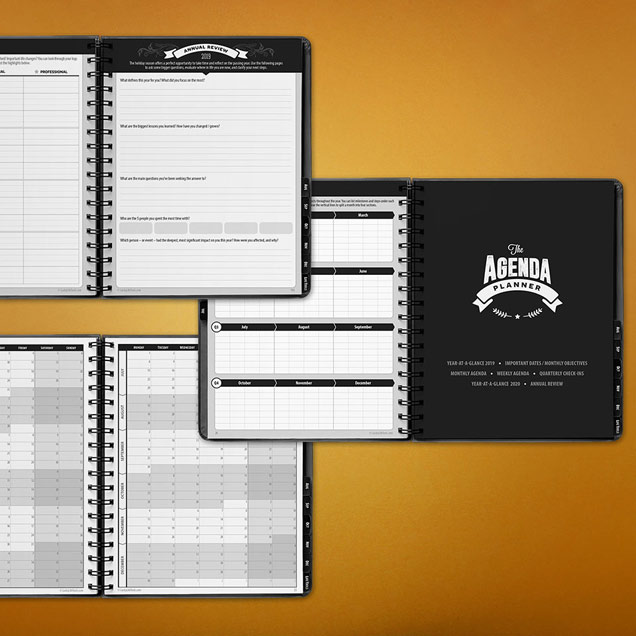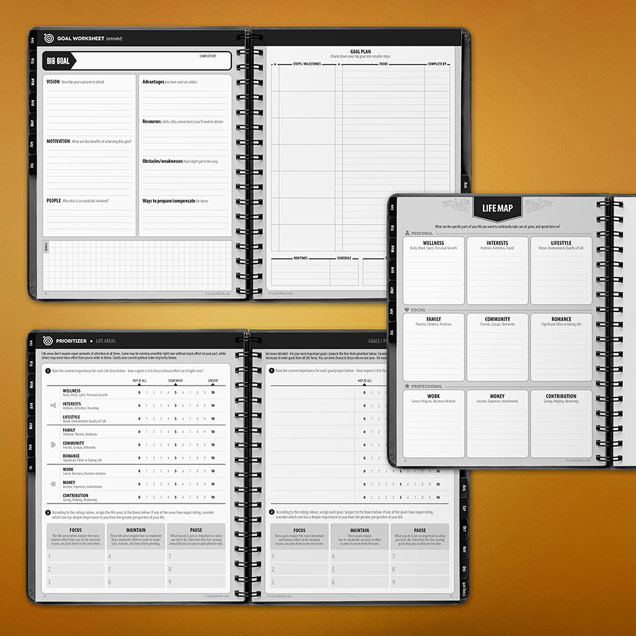LUCKY Life PlannerPrint Product / 2016 - 2021
Concept & Brand
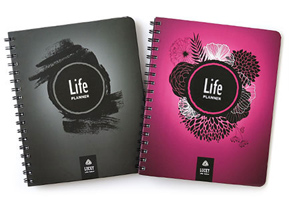
A goal-setting system that keeps your daily schedule aligned with your life goals and priorities.
On Sale: Amazon.com
Why I created LUCKY Life Planner
Most agenda planners are a missed opportunity: they help you schedule events and tasks but don't keep in sight the bigger picture of your life. They also lack accountability and tracking tools. With the Life Planner, I aimed to solve these problems while offering unique tools to plan, track, and optimize life.
Context
Having already created the plan.coffee app and the Life Tools printables, with this planner I wanted to put it all in a printed form. Printed / physical products and e-commerce were completely unfamiliar territory to me, but over 6 years, I learned a lot about them. I also developed skills in InDesign, business, customer relations, and manufacturing.
Unique features / Highlights:
Goal Page
Life Map
Life balance
Life Tools
Goal Setting
Quarterly and Annual Reviews
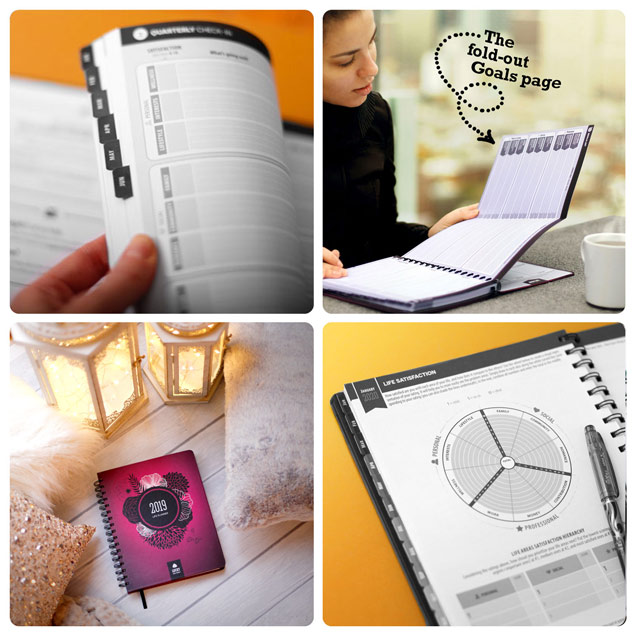
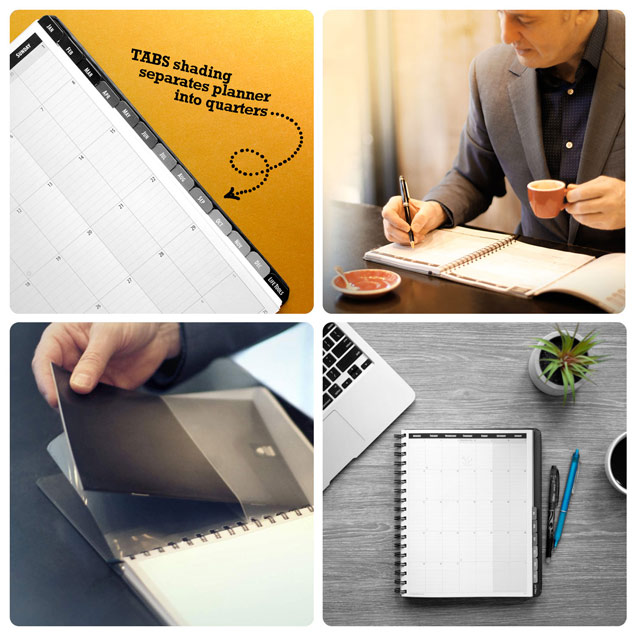
What Does it Contain?
Unlike an ordinary planner, LUCKY Life Planner helps organize life on multiple levels. It contains numerous other tools that help plan, track, and manage life. The main 3 sections of the planner are:
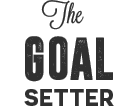 The Goal Setting section helps you think through the larger picture of your life, compartmentalize it into life areas, set goals, prioritize, chunk down large goals into smaller steps, and lay out your plan in a yearly timeline.
The Goal Setting section helps you think through the larger picture of your life, compartmentalize it into life areas, set goals, prioritize, chunk down large goals into smaller steps, and lay out your plan in a yearly timeline.
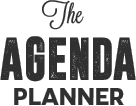 The Agenda Planner offers yearly, monthly, and weekly planning pages. It integrates tools that help you keep focused, log important metrics, and build healthy habits. Quarterly and Annual Reviews help track your progress.
The Agenda Planner offers yearly, monthly, and weekly planning pages. It integrates tools that help you keep focused, log important metrics, and build healthy habits. Quarterly and Annual Reviews help track your progress.
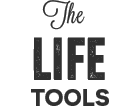 The Life Tools section provides worksheets that help you deal with common life challenges, such as the Habit Builder, Decision Maker, Creativity Booster, Self-Inventory, Financial Tracker, Life Satisfaction Wheel, etc.
The Life Tools section provides worksheets that help you deal with common life challenges, such as the Habit Builder, Decision Maker, Creativity Booster, Self-Inventory, Financial Tracker, Life Satisfaction Wheel, etc.
User Research, Demographics, Personas
Target user: Since the purpose of the planner was scheduling and goal-setting, it was suitable for any gender and profession. What would unite its users was an interest in personal growth and productivity. So I made an assumption it would mainly appeal to people who are ambitious and achievement-oriented, who juggle complex life demands. That would place the majority of them between the ages of college and retirement.
Positioning: I conducted extensive market research, and discovered that, at the time, there was a high demand for productivity and goal-setting planners. But within that niche, there was much room for improvement when it came to features, design, and usability. I felt I could offer something unique to the market.
Visual Style & Design Decisions
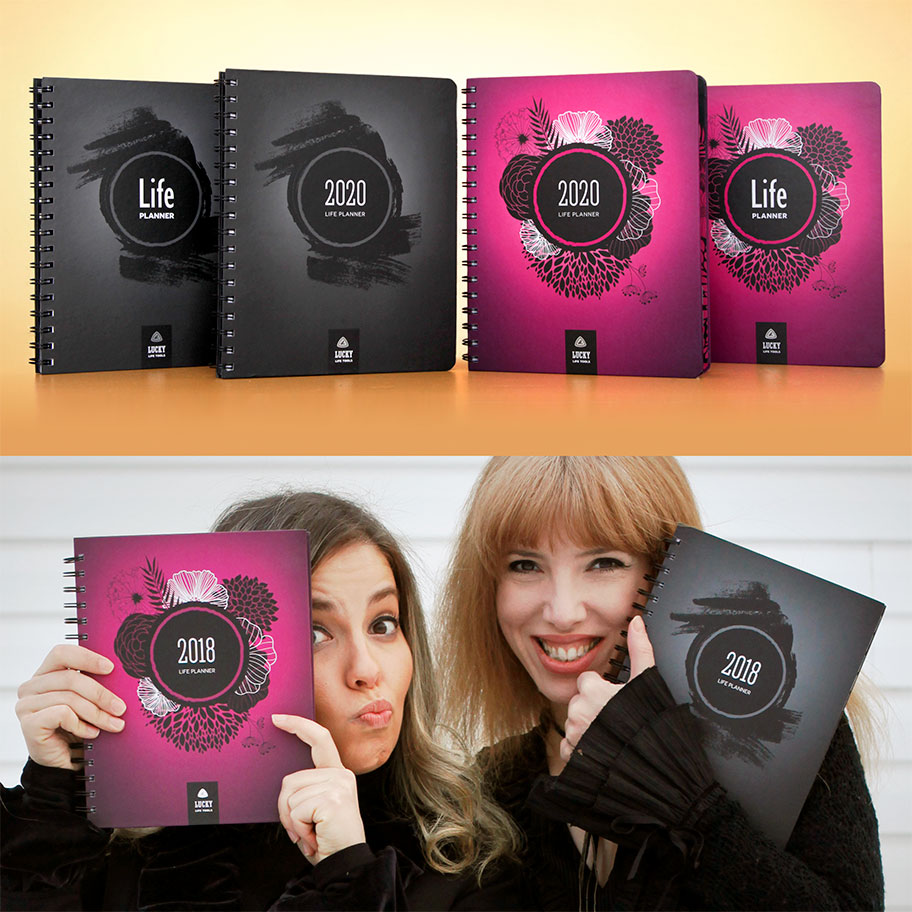
Covers: While I aimed to create a planner that would appeal to any gender, I wanted to give it a unique visual identity. Decoration and style are highly valued in the planning community. Therefore I created two versions of the cover design - one with decorative florals in magenta hues, and one with a simpler, more rugged illustration, in the more universal grey/black color.
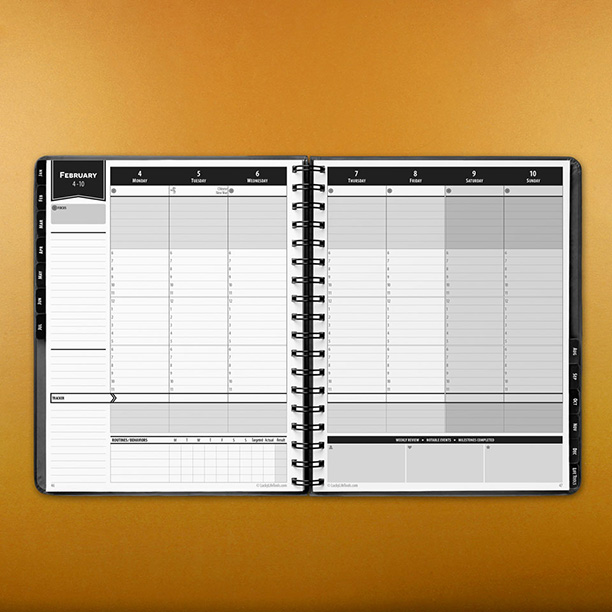
Internal design: I kept the internal design of both versions optimized for efficiency rather than decoration. At every page, I prioritized maximizing comprehension, usability, and writing space. Considering users often color-code events in their planners, I decided to use monochrome black & white scheme, so that color-coded notes can stand out.
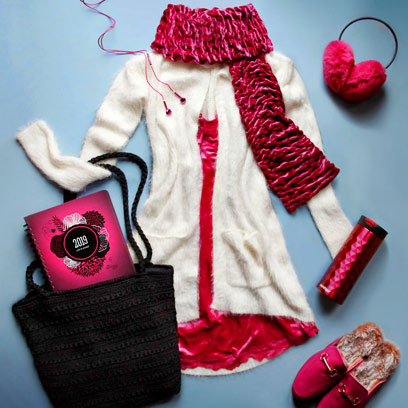
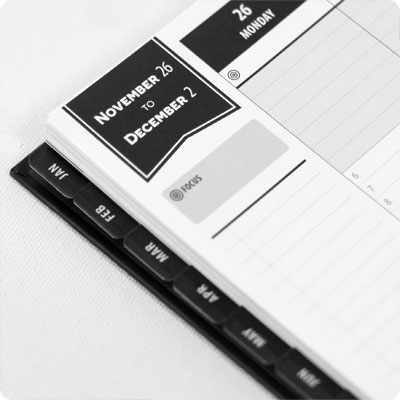
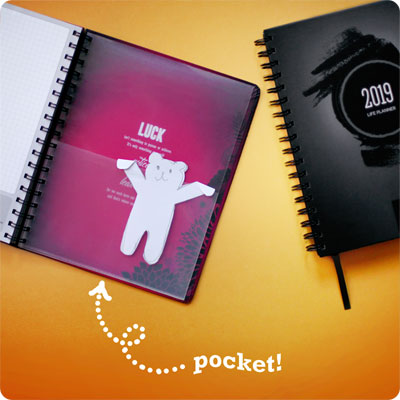
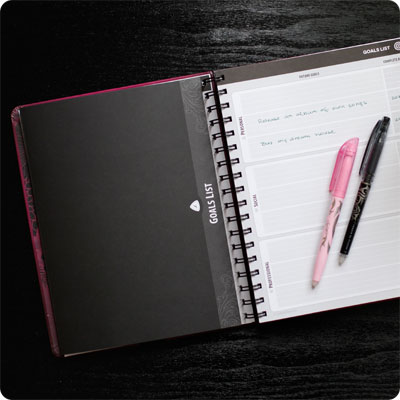
Flexibility: People use their planners differently, so I also aimed for flexibility. I omitted section titles that specify them too narrowly. I strived for a balanced structure that gives guidance on how to use the planner while allowing the user to customize it to fit their own needs.
The Process
Evolution: The dated version of the planner was highly rated and well-loved by thousands of customers, and sold out every season for 6 consecutive years (the undated version is not seasonal, so it's still selling). With each annual publication, the planner evolved significantly in design and construction, based on in-depth surveys, usability research and user feedback. As well as based on my own skills! Print product design was completely new to me when I started and I had much to learn.
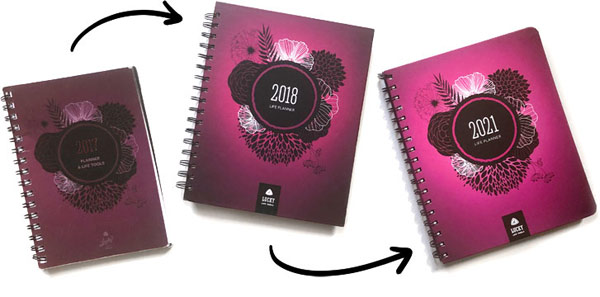
Learnings: From learning Adobe InDesign and pre-press production, to finding quality offshore vendors and improving on every single detail - paper weight, wire-o construction, tabs, lamination, packaging - it was a whole new world. And printing a planner is vastly different from printing a book or a magazine - there's much more manufacturing complexity. Most heartbreakingly, I had to balance my dream vision with reality - there were budget constraints and practical considerations.
Trial and error: Selling a physical product on channels like Amazon presented a million new challenges of its own, which I had to solve through many trials and errors - from choosing the correct packaging to creating effective listings and promotion campaigns.
On the design side, I had to take into consideration how a planner ages. Over the course of a year, the edges wear out - so in 2019 we introduced rounded corners. And cute metallic elements don't last a year of daily use, so after we tried a silver foil logo one year, we went back to no foil the next.
Connecting with Customers, Testing & Refinements

Real-world Feedback: To continue improving the product, I prioritized establishing and maintaining connection with the planner's users. I created a free resource website for all planner owners where they could sign up and download much of the planner content in PDF format - as well as a collection of bonus tools.
Many signed up, which allowed me to connect directly and ask about their experience with the planner.
Hard choices: I conducted many online surveys, in-person testing, and user interviews, to keep evolving every facet of the planner. With diverse and sometimes conflicting user needs, I had to make tough decisions. For instance, while reducing paper weight enhances portability, it may compromise perceived quality - potentially alienating customers who value paper thickness. I had to make the tough call to prioritize the needs of the planner's core customers, who value portability more highly.
Empathy for Change: Product users are uncomfortable with change, even if it's meant to make their lives easier. Understandable - as their established habits are fantastic brain shortcuts that are already making their lives easy.
So I learned the value of introducing product changes gradually, clearly, and with as much guidance as possible.
How my design thinking evolved:
Before having my own business and connecting with real customers, I saw design in isolation. Now I have more perspective on the role it plays in business. Ultimately, the purpose of every business is to deliver value. While good design creates immense value, it's only one part of a larger whole, and sometimes trade-offs are necessary. While I'll always be committed to design excellence (it's my passion), nowadays I feel design decisions must be considered within the larger context of practicality, market needs, and customer benefit.
